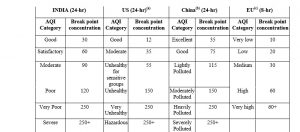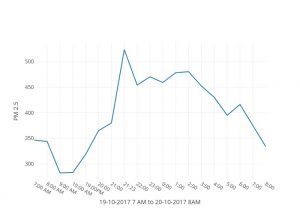One of the largest draws to me as an a American coming to live & work in New Delhi are the vast amount of cultural festivals that take place. Before coming to India I knew very little about Diwali or the history behind the holiday. In lieu of a poor explanation of the holiday on my part I found this video quite insightful in explaining a little bit of the history traditional Hindu celebration. I was lucky enough to have an Indian friend create a Ragoli (colored sand lotus flower of welcome design mentioned in below video) in our home, which I was immensely grateful for.
https://video.nationalgeographic.com/video/diwali-lights-festival
I am grateful to work for an amazing close-knit company where we all celebrated Diwali together as an office at our bosses home. The night consisted of traditional Indian foods that were delicious along with participating in a Puja (traditional pray ritual) which I found to be quite a grounding experience. Afterwards we all gathered around the family room to share in what was one my favorite parts of Diwali, all of the sweets & desserts. The dessert that I most had an affinity towards is called laddu which are cooked flour balls with sugar, I am told there is a wide range of recipes for laddu beyond these characteristics though.
Shifting focus to some of the less savory parts of Diwali, after dinner we ended up driving home in a pollution induced haze of which I have never experienced before in my life. To give a little bit of backstory, Diwali being the festival of lights one of the traditions is celebrating by setting off firecrackers. The state of firecrackers in Delhi is a contentious topic this year as earlier in October the supreme court banned their buying & selling in the Delhi area. From speaking to a few of my friends this ban made a considerable difference in regards to how many firecrackers were set off during Diwali. Firecrackers were shot off in late afterward & on wards as opposed to past years I am told when they were set off all day long. The pollution in Delhi is more noticeable than any city that I have ever lived in. During Diwali this was even more apparent as for the morning after, as well as the whole next week the toxic haze from the firecrackers lingered. The goal of our company is to educate the Indian populous about the dangers of air pollution so that they may take steps to live healthier lives. One of the ways in which we are doing this is by collaborating with organizations in New Delhi (more specifics on this in future posts) and setting up air quality monitors around the city. The goal of the censors in particular is to understand the baseline levels of air quality & see how a massive pollution event like Diwali affects the air quality.
Our sensors track the air quality in a metric called PM 2.5 which combines a wide range of known pollutants in the air then gives a numerical correlation to the level of pollution. The below chart will give a bit of insights as to what are healthy / hazardous levels of PM 2.5

As you can clearly see the chart is relative to the air quality in different countries, that being said it is quite alarming when I was able to read the monitors we had been tracking in India. While the below data is only a snapshot, this is what the PM 2.5 levels looked like the day before Diwali in an area of Northwestern Delhi called model town.

For the majority of the day the air level is hazardous for people. For those with preexisting lung or heart conditions the negative effects can even be worse. This is only a small sample but it is around what would be expected for this area of Delhi on a given weekday. In the past few months we have set up over 20 different monitors around the city gathering data for a particular area. The below graph is during the 19th which was the main day for Diwali firecrackers.

As you can see from the during // post Diwali graph, the toxic haze which we were driving home in was at times over 500 PM. While the air quality remained over 500 for a relatively short period of time, one can understand the potential damage that can be done in such a short period of time. At over 500 PM the air has been known to affect respiratory impact upon even those who are healthy, people with preexisting lung/heart disease are at significant health risk.
Air pollution in India & the world is not going to be solved by singular individuals or overnight. The key is having the information readily available to everyone in an easily digestible format. Everyone can understand that the air the night of Diwali & morning after was toxic, but now that we are monitoring the air we can begin to educate people about the health risks. Our company at this stage is focusing primarily about monitoring & educating people in India about how dangerous the air can be to our health. We believe that after people become more educated about the dangers of the air, they will more proactively take steps to improve the health of themselves & their families. We at AQI India are excited about the future, about a more educated India in regards to air pollution. Share your own Diwali stories in the comments section if you could notice any differences from this year vs previous due to the ban on firecrackers. As someone who just experienced their first Diwali this especially interests me. I hope this post was helpful to people, it is just a sample of the work we are doing with much more to come.
Namaste,
Tim